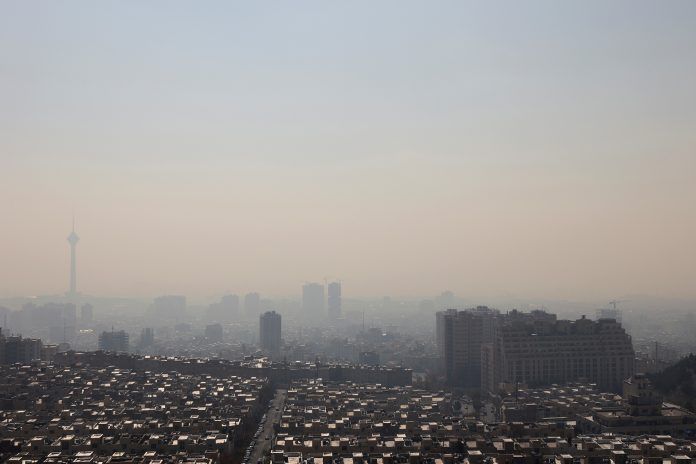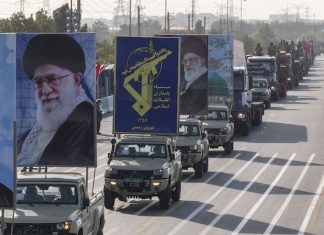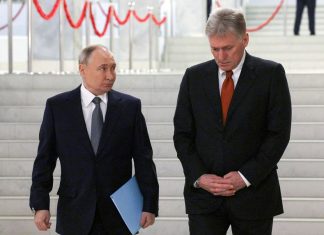
By Kayhan Life Staff
The architects of the Islamic Republic claimed that their 1979 revolution would usher in a new era of economic prosperity, social justice, and equal opportunity for all in Iran.
Nearly 43 years on, their “classless economy” has crippled the country’s financial system, pushed a large segment of the population into poverty, placed the nation’s wealth into the hands of a select group of political insiders, and widened the gap between the wealthy and the poor, particularly in major metropolitan areas.
The difference in housing prices between Tehran’s northern and southern districts shows the massive gap between social classes.
A recent survey showed that residential homes in affluent neighborhoods in north Tehran cost on average $3,300 more per square meter than houses in the city’s south side (using the daily market exchange of $1 to 300,000 rials).
The data shows that in most cases, the cost of buying an entire apartment in south Tehran equals the price of one square meter of a luxury apartment in north Tehran.
[aesop_image img=”https://kayhanlife.com/wp-content/uploads/2022/01/khaneh.jpg” panorama=”off” credit=”A general view of Tehran and residential homes in affluent neighborhoods. KL./” align=”center” lightbox=”on” captionsrc=”custom” captionposition=”left” revealfx=”off” overlay_revealfx=”off”]
Recent real estate market statistics show housing units listed for sale in Tehran cost between $534 and $3,670 per square meter.
For instance, a 172-square-meter condominium on the fifth floor of a high-rise apartment complex in Tehran’s upscale Sharak-e Gharb district was recently put on the market for $3,367 per square meter.
In another instance, the seller asked $1,734 per square meter for a 100-square meter condominium on the sixth floor of a luxury high-rise apartment complex on Aghdasieh street in north Tehran.
An apartment in a 15-year-old building in the southwest Navvab district of Tehran, near the highway, was recently advertised for $534 per square meter.
A four-year-old house in Tehran’s Fallah district was recently sold for $600 per square meter.
The cost of buying an entire apartment in south Tehran sometimes equals the price for one square meter of a condominium in an upscale high-rise in north Tehran.
For instance, luxury condominiums in Chenaran Tower in Elahiyeh, one of Tehran’s most exclusive and affluent northwestern neighborhoods, are between 200 and 600 square meters and are listed on the internet for $300 to $625 a square meter.
Estate agents and sellers list condominiums in other luxury apartment complexes in Tehran for similar prices, including Rolex Tower in Farmaniyeh district, Roma Tower in Kamraniyeh district, and Alton Kurt Tower Niavaran district.
For instance, an 800-square-meter penthouse apartment with four bedrooms, ten parking units, a conference room, swimming pool, sauna, jacuzzi, and roof garden are put on the market for $14 million — or $16,700 per square meter.
Last week, a house in Tehran was reportedly put on the market for $30.6 million.
The housing website Kilid reportedly posted an ad for a 1,000-square-meter villa in the northwest Valenjeck district of Tehran for $12.4 million. The five-bedroom villa has a gym, swimming pool, sauna, jacuzzi, lobby, elevator, and other luxury features.
A 2,870-square-meter six-bedroom villa in the Sa’dabad district, with a conference room, roof garden, gym, central antenna, and other amenities, is reportedly listed for $28.7 million.
According to an estate agent, a 1,120-square-meter villa in the Shahrak-e-Gharb district with six bedrooms, a 550-square-meter garden, a conference room, gym, fully equipped kitchen, sauna, roof garden, private elevator, and other amenities sells for $9 million.
A newly built five-bedroom 1,100-square meter villa in Zafaranieh with six parking units, a swimming pool, sauna, jacuzzi, gym, and other facilities is listed for $7 million.
These are just some examples of luxury homes and apartments on the market in Tehran, many of which reportedly sell quickly.
Meanwhile, a vast majority of people living in urban areas cannot afford to buy homes, share apartments or rent a room, even in the least desirable neighborhoods of cities.
The number of people with no known address who sleep rough and live in cardboard boxes has increased significantly in major metropolitan areas in Iran in recent years.





